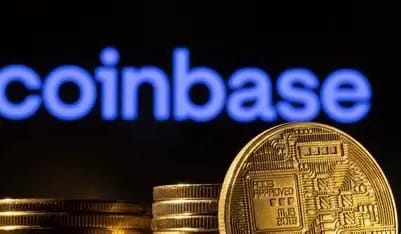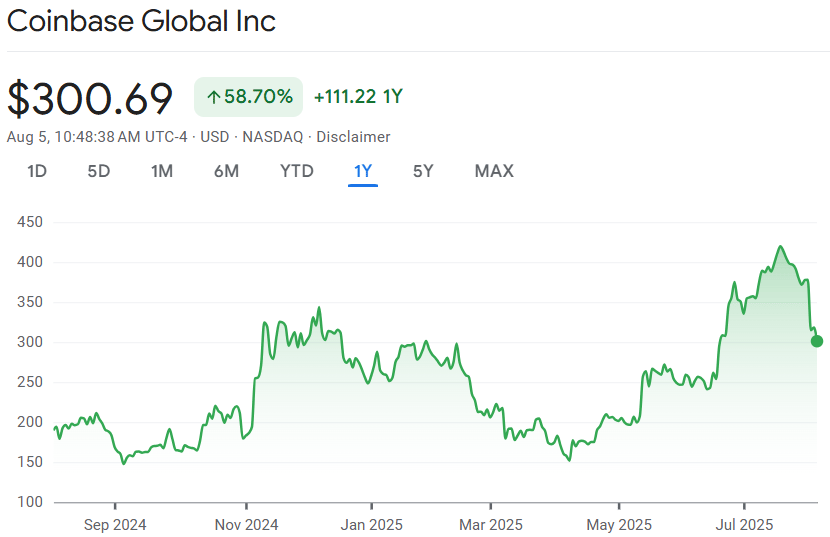- The Pragmatic Investor
- Posts
- Midweek Deep Dive: 🧠 Is Coinbase a Goldmine or a Headache?
Midweek Deep Dive: 🧠 Is Coinbase a Goldmine or a Headache?

🌞 Good Morning, Folks!
Everyone saw the $1.4 billion profit headline.
Almost no one asked how Coinbase made it.
Wall Street cheered for five minutes, then dumped the stock like it had caught fire. Meanwhile, retail investors scratched their heads — how does a company post a billion in net income and still sell off double digits?
That disconnect isn’t just about Coinbase. It’s about the market’s increasing habit of reacting to headlines, not underlying business quality. This week, I’m unpacking the difference — and why Coinbase’s quarter was less about crypto and more about what this company is trying to become.
Because if you’re only watching the earnings number, you’re missing the entire pivot. And that pivot could either build the foundation of a fintech monster — or bury the brand under its own weight.
🌐 From Around the Web
Quietly monumental. A new team at the Fed and Bureau of Labor Statistics could reshape how inflation data is interpreted and how interest rates are steered. This is a policy pivot that will land on asset valuations and bond yields before most retail investors realize it.
📨 Countries Push for Last-Minute Deals as Tariff Deadline Looms — Trump Says ‘People Love the Tariffs’
It’s that tariff cliff many have seen coming—and suddenly businesses are scrambling for exemptions. While mainstream coverage plays weather update, savvy investors know this kind of event creates discrete risk pockets in global supply chains and cost inflation. Be selective before global momentum turns sour.
You won’t regret reading this. A well-respected investor shares mistakes that cost more than money—lost credibility, missed compounding, regret. Great writers tell you what to buy; wise ones remind you what not to do. This is that rare breed of lesson with teeth.
TOGETHER WITH OUR PARTNER
Join 400,000+ executives and professionals who trust The AI Report for daily, practical AI updates.
Built for business—not engineers—this newsletter delivers expert prompts, real-world use cases, and decision-ready insights.
No hype. No jargon. Just results.
🔍 This Week’s Focus: 🧨 Coinbase Got Smacked by the Market… I’m Looking Closer

Let’s be real:
Most investors only check Coinbase when Bitcoin spikes.
But here’s the thing — Coinbase just posted a $1.4 billion net profit, and the stock still dropped like a rock.
Confused? You’re not alone.
Because what looked like a blowout quarter… might just be smoke and mirrors.
Behind the scenes, their core business is cracking.
And the company that was supposed to be the “Amazon of crypto” is suddenly pivoting hard — toward tokenization, ETFs, and stablecoin interest.
So I had to ask myself:
Is this a generational buying moment — or a trap disguised as a rebound?
Let’s break it down.
💰 The Numbers Are Flashy… But Are They Real?
Coinbase’s Q2 results made headlines for all the right reasons — at first glance:
Total revenue: $1.5 billion
Net income (GAAP): $1.4 billion
Adjusted EBITDA: $512 million
Crypto and USD holdings: over $11 billion
But the devil is in the details.
That $1.4 billion profit? It came from one-off gains — like a $1.5 billion bump from investments and another $362 million from crypto revaluations.
Their adjusted net income — the part that reflects actual ongoing operations — was just $33 million.
So while the headlines scream profit, the fundamentals whisper… caution.
🔒 Subscription Revenue Is the Silent Engine
Here’s the part I do like: recurring income.
Coinbase’s subscription and services revenue held strong at $656 million, making up nearly half of total revenue.
That includes:
Stablecoin yield from USDC
Institutional custody fees
Blockchain rewards (staking)
Interest income from customer cash
This is the kind of revenue that doesn’t depend on meme coin mania or speculative trading. It’s boring. It’s sticky. And it’s what could eventually justify a premium valuation — if they keep growing it.
🧨 Retail Trading Volume Is the Real Problem
Now here’s the ugly truth: transaction revenue dropped 39% from Q1.
Even with crypto prices up, retail trading activity is weak. That’s a red flag.
Coinbase was built as a trading platform first. When users aren’t trading, the whole engine slows down.
Even worse, they guided July transaction revenue to just $360 million — a steep slowdown. And this isn’t a one-quarter fluke. It’s a trend.
Which begs the question:
If trading stays quiet… can they still grow?
🧪 Tokenization: The Big Bold Pivot
Coinbase is betting big on a new identity — the “Everything Exchange.”
Instead of just crypto, they want to tokenize:
Real-world assets
Stocks
Derivatives
Bonds
They’re laying the infrastructure to let users trade tokenized versions of traditional assets — like tokenized S&P 500 or treasury bills — directly on the blockchain.
It’s bold. It’s visionary.
But it’s also untested.
If it works, Coinbase becomes the bridge between TradFi and DeFi.
If it doesn’t? They’re stuck in limbo — not quite a brokerage, not quite a bank, and no longer the dominant crypto trading platform.
⚠️ Costs Are Creeping Higher
One thing that got buried in the excitement: expenses jumped 15% this quarter.
Why?
Partly due to a $307 million charge related to a data breach. But even beyond that, operational costs are climbing — compliance, infrastructure, legal, and R&D into tokenization tech all come with a steep price tag.
And this is during a “good” quarter.
What happens when the crypto tide recedes again?
🏦 Institutions Are Still Interested
Not everyone is running for the exits.
Big players — like ARK Invest — used the post-earnings dip to scoop up more Coinbase shares.
Wall Street is divided. Some see long-term optionality, others are worried about execution risk. But when the smart money is still nibbling, I pay attention.
This doesn’t mean they’re right. But it means Coinbase isn’t being abandoned — yet.
🧭 My Take: Opportunity if They Deliver. Trap if They Don’t.

Here’s the raw take:
If trading volume recovers, tokenization gains traction, and stablecoin revenue scales… this dip could be a buying moment.
But if retail stays quiet, regulation intensifies, or tokenization fizzles… this becomes a value trap built on outdated hype.
The margin for error is razor-thin.
So here’s how I’m approaching it:
Small position. High conviction? Not yet.
Monitor quarterly: subscription growth + tokenization rollout + expense control.
Use it as a crypto ecosystem proxy, not a standalone winner.
And remember — just because a company makes headlines, doesn’t mean it deserves your money.
📌 Final Word
Coinbase gave us a “record profit” quarter that was mostly financial engineering.
But beneath that? A business at war with itself — between fading retail trading and the hope of a tokenized future.
Opportunity or trap?
It’s not a binary answer. It’s about execution from here.
If they pull it off, Coinbase might just become the most important fintech name of the decade.
But if not… this earnings beat will go down as the loudest warning shot no one listened to.
TOGETHER WITH OUR PARTNER
Master ChatGPT for Work Success
ChatGPT is revolutionizing how we work, but most people barely scratch the surface. Subscribe to Mindstream for free and unlock 5 essential resources including templates, workflows, and expert strategies for 2025. Whether you're writing emails, analyzing data, or streamlining tasks, this bundle shows you exactly how to save hours every week.
🧠 What did you think of today's newsletter? |
🧠 Final Thought
There’s a lot of noise in this market — conflicting headlines, inflated earnings, and price reactions that feel disconnected from reality. Coinbase is a perfect example. A $1.4 billion profit hits the tape and the stock tanks. That kind of whiplash can make any investor second-guess their instincts. But this isn’t new. It’s just the market doing what it always does when narratives and numbers collide.
When things feel murky, I anchor to one rule: focus on the trajectory, not the quarter. Coinbase is shifting from a trading-first platform to an infrastructure play. That kind of pivot rarely looks clean in the moment — but it creates optionality. The story isn’t about what happened last quarter. It’s about whether they can become essential to what’s next. And if they pull that off, today’s uncertainty will look like tomorrow’s discount.
Stay Sharp
— AK

Disclaimer: The content on this blog is for educational and informational purposes only and is not intended as financial, investment, tax, or legal advice. Investing in the stock market involves risks, including the loss of principal. The views expressed here are solely those of the author and do not represent any company or organization. Readers should conduct their own research and due diligence before making any financial decisions. The author and publisher are not responsible for any losses or damages resulting from the use of this information.



Reply